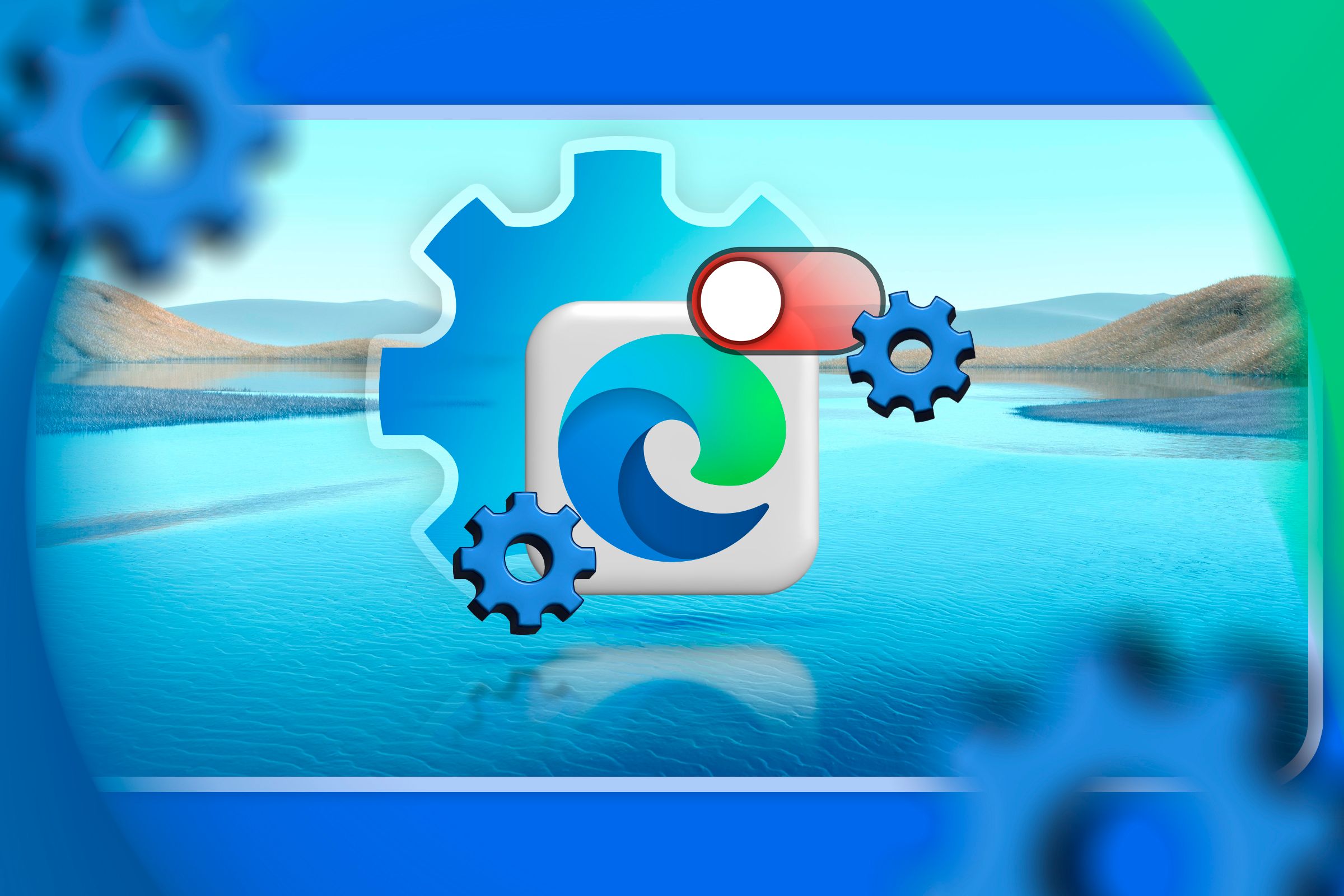Using keyboard shortcuts in Microsoft Edge—the default web browser for Windows computers—can significantly improve your web experience and save you lots of time. Indeed, once you get to know the most useful shortcuts, you can do everything you need to without touching your mouse.
The keyboard shortcuts in this article apply to Windows computers. However, if you’re using Edge on a Mac, the keyboard shortcuts often follow the same principle, though the Alt key on a Windows keyboard is often replaced by the Options key on a Mac, and the Windows Ctrl key can be substituted for a Mac’s Cmd key.
Working With Tabs and the Microsoft Edge Window
One way to improve your experience when browsing the web in Microsoft Edge is to use the web page tabs, which sit at the very top of the Edge window. They are designed to save you from having to open new windows if you want to have multiple web pages open at the same time. Here are some essential keyboard shortcuts to help you organize both the individual tabs and the Edge window as a whole:
|
Action |
Shortcut |
|---|---|
|
Open a new tab (and jump to its address bar) |
Ctrl+T |
|
Duplicate the current tab (and jump to the duplicate’s address bar) |
Ctrl+Shift+K |
|
Close the current tab |
Ctrl+W (closes window if one tab open) |
|
Close all tabs (and, thus, the Microsoft Edge window) |
Ctrl+Shift+W |
|
Jump to a specific tab |
Ctrl+[1-9] (tabs numbered from left to right) |
|
Jump to the next tab |
Ctrl+Tab or Ctrl+Page Down |
|
Jump to the previous tab |
Ctrl+Shift+Tab or Ctrl+Page Up |
|
Reopen the last tab you closed as a new tab |
Ctrl+Shift+T |
|
Open a new Microsoft Edge window |
Ctrl+N |
|
Open a new InPrivate Microsoft Edge window |
Ctrl+Shift+N |
|
Jump between panes and areas in the Microsoft Edge window |
F6 (next) and Shift+F6 (previous) |

Related
Working With the Current Web Page in Microsoft Edge
Once you land on a web page, these keyboard shortcuts will help you find your way around:
|
Action |
Shortcut |
|---|---|
|
Refresh |
Ctrl+R or F5 |
|
Perform a hard refresh (ignoring cached data) |
Ctrl+Shift+R or Shift+F5 |
|
Save the web page to your computer |
Ctrl+S |
|
Activate or stop the Read Aloud tool |
Ctrl+Shift+U |
|
Move focus from another pane to the web page pane |
Ctrl+F6 |
|
Stop loading the web page |
Esc |
|
Close the active dialog box or pop-up |
Esc |
|
Scroll down one screen length |
Spacebar or Page Down |
|
Scroll up one screen length |
Shift+Spacebar or Page Up |
|
Jump to the top of a web page |
Home |
|
Jump to the bottom of a web page |
End |
|
Open the Find tool |
Ctrl+F (then, type the query) |
|
Jump between Find results |
Enter (next result); Ctrl+Shift+G (previous result) |
|
Mute all sounds on the current page (handy for websites with autoplaying videos) |
Ctrl+M |
|
Zoom in |
Ctrl+[Plus] |
|
Zoom out |
Ctrl+[Minus] |
|
Go to the previous web page |
Alt+Left |
|
Go to the next page (if you jumped to the previous page) |
Alt+Right |
Using Caret Browsing
One way to navigate web pages without using a mouse is by activating caret browsing. As well as making it easier to move to different sections of a web page, caret browsing also allows you to select text using only your keyboard.
The easiest way to understand how caret browsing works is by imagining that a web page is a Word document. After pressing F7+Enter, you’ll see a blinking cursor, usually in the first element of the web page in the top-left corner. In this example, after activating caret browsing, the flashing cursor is positioned before the first item on the website’s menu bar:
With caret browsing turned on, you can use the following keyboard commands to complete the following actions:
|
Action |
Shortcut |
|---|---|
|
Jump between elements on a web page |
Tab or Shift+Tab |
|
Open a link when the caret is over a URL or website menu item |
Enter |
|
Select text in the element where the caret is currently placed |
Shift+Left and Right Arrows |
|
Copy the selected text |
Ctrl+C |
Press F7+Enter to turn caret browsing off again.
Using the Microsoft Edge Favorites Bar
The Favorites Bar in Microsoft Edge is where you can store quick links to the sites you visit the most. These keyboard shortcuts will help you speed up this process even more:
|
Action |
Shortcut |
|---|---|
|
Show or hide the favorites bar in all Edge windows |
Ctrl+Shift+B |
|
Jump to the first icon on the favorites bar |
Alt+Shift+B |
|
Move between icons on the favorites bar |
Left and Right Arrows |
|
Add the current web page to the favorites bar |
Ctrl+D |
|
Open the window that lets you save all open tabs into a favorites folder |
Ctrl+Shift+D |
|
Open the favorites drop-down menu |
Ctrl+Shift+O |
|
Remove a web page from the favorites bar |
Ctrl+Shift+O > Up and Down Arrows > Application key > D |
Microsoft Edge’s sidebar is very useful if you’re a multitasker, as it lets you access the tools and apps you use the most without breaking your workflow or exiting the current web page. Here are the keyboard shortcuts you need to navigate this handy feature:
|
Action |
Shortcut |
|---|---|
|
Open the search field in the sidebar |
Ctrl+Shift+E |
|
Jump between apps and tools in the sidebar |
Ctrl+Shift+E, then tab until the relevant app or tool is selected |
|
Open a selected app or tool in the sidebar |
Enter |
|
Collapse the opened sidebar pane, but leave the sidebar showing |
Ctrl+Shift+/ x 2 |
|
Hide or show the sidebar |
Ctrl+Shift+/ |

Related
Don’t Sleep on the Edge Sidebar: 5 Ways I Use It Every Day
The Edge sidebar is the perfect sidekick.
Using the Address Bar in Microsoft Edge
The Microsoft Edge address bar—also known as the URL bar—is the text field at the top of the window that holds the web address of the current page. It’s also where you can type the address of a different site you want to visit or the keywords for a search you want to perform. Using the address bar is straightforward, so here are just four keyboard shortcuts that you need to know:
|
Action |
Shortcut |
|---|---|
|
Select all text in the address bar |
Alt+D or Ctrl+L |
|
Begin a search in the address bar |
Ctrl+E or Ctrl+K |
|
Paste copied text or URL into the address bar |
Ctrl+Shift+L If the pasted item is a URL, the web page will be launched. If the pasted item is not a URL, a search will be launched. This overrides the current website you have open in that tab. |
|
Add “www.” and “.com” to text in the address bar, and go to that website |
Ctrl+Enter |
Using Microsoft Edge as a PDF Reader
As well as being a web browser, Microsoft Edge doubles as a PDF reader. So, here are some useful keyboard shortcuts for working with PDFs:
|
Action |
Shortcut |
|---|---|
|
Rotate PDF 90° clockwise |
Ctrl+] |
|
Rotate PDF 90° counter-clockwise |
Ctrl+[ |
|
Scroll up and down on the current page |
Up and Down Arrows |
|
Jump to the next page |
Right Arrow |
|
Jump to the previous page |
Left Arrow |
|
Move to the end of the PDF |
End |
|
Move to the start of the PDF |
Home |
Other Useful Microsoft Edge Keyboard Shortcuts
Whether you’re viewing a website or a PDF, here are some final keyboard shortcuts that will speed up your work in Microsoft Edge.
|
Action |
Shortcut |
|---|---|
|
Open the “Settings And More” menu (the three dots in the top right corner) |
Alt+E or Alt+F |
|
Open the History drop-down menu |
Ctrl+H (then, type a search query or use the Up and Down Arrows) |
|
Open the Developer tools |
Ctrl+Shift+i |
|
View the source in a new tab |
Ctrl+U |
|
Open the Downloads menu |
Ctrl+J (then use the Up and Down Arrows to navigate) |
|
Print the current page |
Ctrl+P or Ctrl+Shift+P |
|
Open Collections |
Ctrl+Shift+Y |
|
Open options for clearing browsing history |
Ctrl+Shift+Delete |
|
Open your home page in the current tab |
Alt+Home |
|
Switch to full screen mode (and exit full screen mode) |
F11 |
As well as having a user-friendly interface that makes using keyboard shortcuts easy, the web browser has many other tools and features that save me from switching to an alternative browser, including the ability to take screenshots within the app, get automatic shopping discounts and coupons, and send files between devices with Drop.






